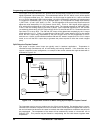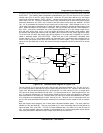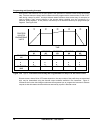
Programming and Operating Concepts
Video Recorder – User Manual 74
3.15 Data Storage
This instrument supports either floppy 1,44 MB or 100 MB ZIP disks. Note that only DOS formatted
floppy disks may be used in the instrument’s disk drive and the unit’s front door must be closed for any
disk drive operations to take place. The floppy disks may be initialized in the instrument or on an IBM-
PC with the initialize utility.
Read this overview thoroughly to understand the fundamentals behind the instrument’s data storage
capabilities.
Categories of Stored Data
There are four categories of disk storable data. Each category of data is stored in its own unique file.
The categories are:
Data Storage
Configuration Storage
Setpoint Program Storage
Calibration Storage
Data Storage Configuration CalibrationSetpoint Program
Process Data Diagnostic Data
Trends
Unit Data
Alarms
Events
Figure 3-28 Categories of Stored Data
The first category of stored data, Data Storage, is comprised of two types of data: process data and
diagnostic data. When the instrument stores these data types it is essentially functioning as a recorder.
Process data is comprised of up to four files containing historical information on the process that the
instrument is monitoring and/or controlling, such as the temperature trend or a log of a furnace over time.
Process data also includes any alarm or discrete event information.
Diagnostic data is the result of the instrument’s execution of diagnostic routines during instrument start-
up and maintenance procedures (such as calibration). Online operation is also monitored to detect both
process faults and internal electronic errors. If a diagnostic error occurs, a record of it can be stored to a
single diagnostic file.
The second category of stored data is configuration storage, which is a single file comprised of the
instrument’s programming and configuration. Configuration storage includes the programming of the
instrument’s analog input characteristics, the configuration of its control loops, or, perhaps, the
programming of any math or logic functions.
The third category of stored data is Setpoint Program storage, which is a single file –a setpoint program–
containing one to eight setpoint profiles, depending on the instrument. Recall that set point profiles are
user specified plots of process values against time that are divided into ramp and soak segments of
varying time lengths. Setpoint programs may be stored to disk or to the instrument’s memory.
The fourth category of stored data is calibration storage, which is a file containing the instrument’s
analog input and output calibration. This file may be used to restore calibration in the event that a full
calibration, using a calibration source and/or meter, cannot be performed.


















